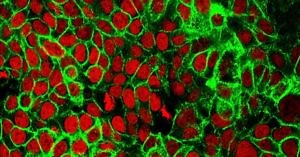AACR21 Preview 5 Promising new developments in the PARP field and beyond

Imagine the DDR pathway as a mass of many different notes and targets all interconnected…
We’re on our fifth AACR Preview already this year and there’s plenty more science and clinical topics to cover yet as we go through the emerging topics up on deck.
In this latest update we take a look at the growing field of DNA damage repair – not just old targets, but a raft of emerging ones too, some of which are still in early preclinical development while others are in early phase 1 trials.
We also have some expert commentary on some of these new targets – what stands out, what’s validated and just as importantly, what’s not?
It’s time to get to the centre of things in PARP-land…
To learn more about the hot topics at AACR21 and get a heads up on our oncology commentary and insights, subscribers can log-in or you can click to gain access to BSB Premium Content.
This content is restricted to subscribers










 Fans of Harry Potter, will no doubt be familiar with the Goblet of Fire (“La Coupe de Feu” in the French version) and how it was used to select the champions from three schools of magic who would compete against each other in a tournament.
Fans of Harry Potter, will no doubt be familiar with the Goblet of Fire (“La Coupe de Feu” in the French version) and how it was used to select the champions from three schools of magic who would compete against each other in a tournament.